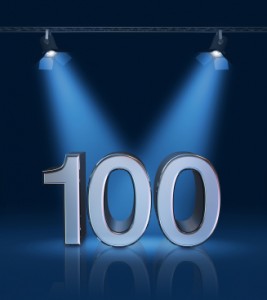 I’ve been watching reruns of the Ken Burns series The National Parks on PBS. It’s an in-depth look at the birth and evolution of our country’s national park system. Called “America’s best idea” by writer and historian Wallace Stegner, men both famous ( Theodore Roosevelt, John Muir )and lesser-known (Stephen Mather , Charles Young) were called upon to leverage their leadership skills to help preserve our nation’s rich landscape.
I’ve been watching reruns of the Ken Burns series The National Parks on PBS. It’s an in-depth look at the birth and evolution of our country’s national park system. Called “America’s best idea” by writer and historian Wallace Stegner, men both famous ( Theodore Roosevelt, John Muir )and lesser-known (Stephen Mather , Charles Young) were called upon to leverage their leadership skills to help preserve our nation’s rich landscape.
The other night, I watched Episode 3 which chronicles the years 1915 – 1919. As I watched, I was struck by the difficulty of the decisions National Parks advocates faced. For example, Stephen Mather, the National Parks Service first director, faced stiff opposition to the idea of naming the Grand Canyon as a National Park. As an observer 90 years removed from the situation, it seems clear: of course, we should save The Grand Canyon for future generations. But for those leaders who were tasked with setting aside land for conservation, the decision was anything but easy at the time.
The passage of many years certainly gives the gift of perspective. I’m reminded of my friend Pete’s dad, Wally Smith (not their real names). Mr. Smith was famous amongst his family members for an assortment of witticisms, which over time became known as “Wallyisms”. One of Pete’s favorite Wallyisms related to decision-making. Evidently, when Pete was young and grappling with a difficult decision, he would seek out his father for sage advice. Pete would present his dilemma to his father, asking, “Do you think it’s the right decision?” Pete’s father would gravely respond:
“Well, you’ll know in a 100 years.”
Gee, thanks, Dad.
But you know what? Wally was on to something.
Those tough decisions, the ones that keep us up at night— eventually we (or our successors) will have the benefit of history to help judge whether or not we made the right choice. But for now, in this moment, we need to decide. Or, perhaps, make a choice not to decide, at least for the time being. In either case, we must have faith that we know right from wrong, good choices from bad. We must have the character to stand up for inequities, and to put the greater good before our immediate self interests. This is especially true if we are in positions of leadership that require the stewardship of precious resources.
Which brings me back to the leaders featured in The National Parks series. The passage of 100 years hasn’t changed the core of what it means to be a leader. Leaders back then grappled with the implications of big decisions, just as they do today. Sure, there are differences (telegraph vs. smart phones) but the human factors that drive the decision remain largely unchanged. A person with character is a person with character, whether he or she lives today or lived a century ago.
Leaders—are you currently faced with a tough dilemma? Ask yourself: what will my decision mean 100 years from now? Who knows, maybe a Wallyism from the late 20th century will help you set the stage the 21st century.
Incidentally, I thought this topic would be a fitting one, given that this is The People Equation’s 100th blog post. Do you have a mentor or family member who’s famous for his or her sage advice? Care to share? We’d love to hear it.
Photo credit: istockphoto © DSGpro
Jennifer,
Congrats on your 100th post!
I absolutely love this idea. Asking the question “What will my decision mean 100 years from now?” is a great one. It is also comforting to realize that many of the decisions we make will have little consequence 100 years from now. Knowing that can be a relief, don’t you think? Other decisions, though they may seem small, will make a cumulative difference in our lives and should be carefully considered for their lasting impact.
@Becky,
Yes, the question does really help us put things in perspective. Just last night, my husband and I were wrestling with a school decision for one of our kids. We stood back and asked, “what will this mean next year. . . and 5 years down the road?” Even just lengthening the horizon by a few years really helped us see the broader picture. We were too focused on the “here and now” and it was creating a lot of needless fretting.
Great Post- could you imagine condos and hotels over looking the grand canyon? UGH
Your post reminds me of the handy book I keep at the ready for a chapter when I need it- “Don’t Sweat the Small Stuff” an oldie but goodie, has a chapter on “100 years from now- all new people” meaning more times than not the decisions we make have little consequence in 100 years, we need to move through them. When my team stresses out I will often walk by and say “remember- 100 years from now- all new people” we have a laugh and put things in perspective so we are able to focus on the task at hand.
And yet the Grand Canyon- well we certainly cannot say that can we?- as I was recently there and it is magnificent. Ken Burns- one of the best story tellers of our time.
Debbie,
No, I most certainly can’t imagine an over-developed Grand Canyon. What I like about your example is that it employs the “100 year rule” in the opposite direction: helping people gain perspective on what the “small stuff” is.
Thanks so much for stopping by The People Equation.